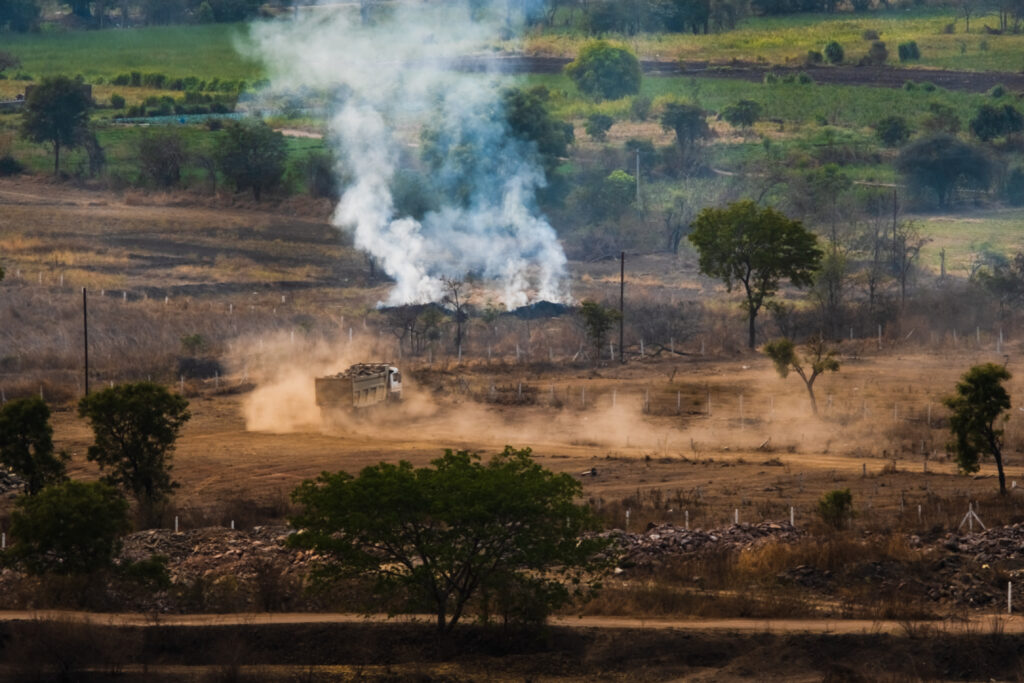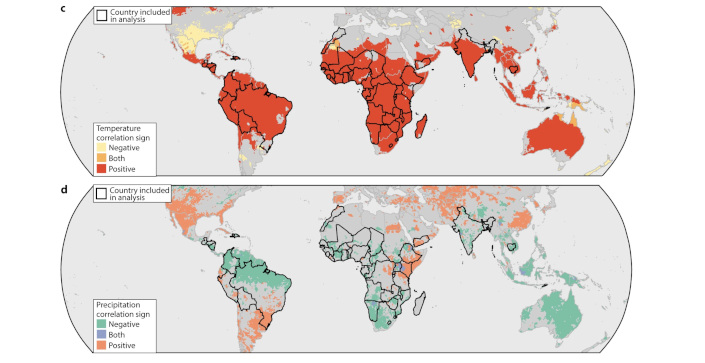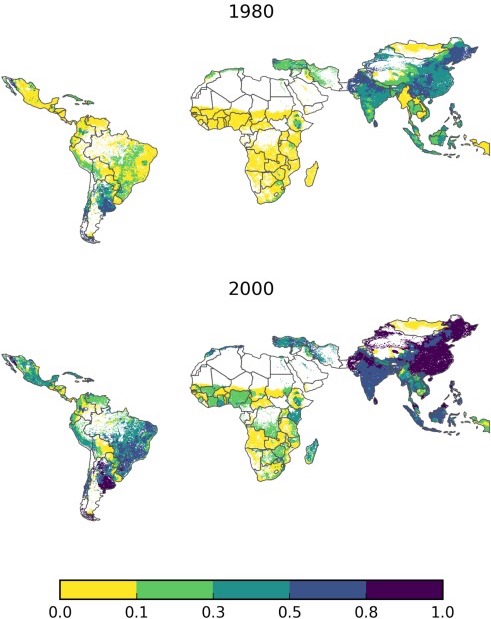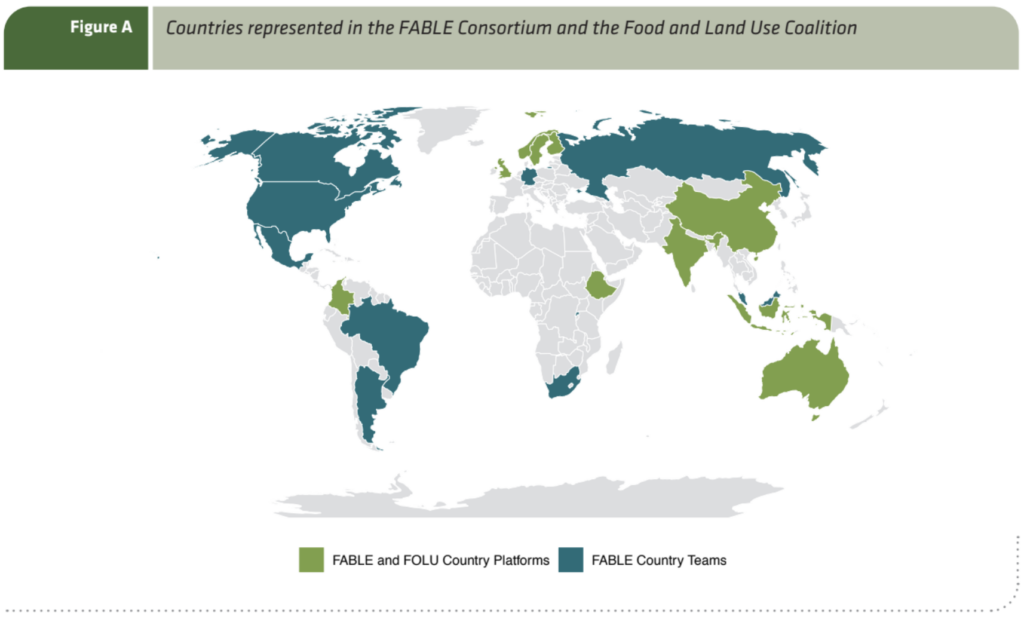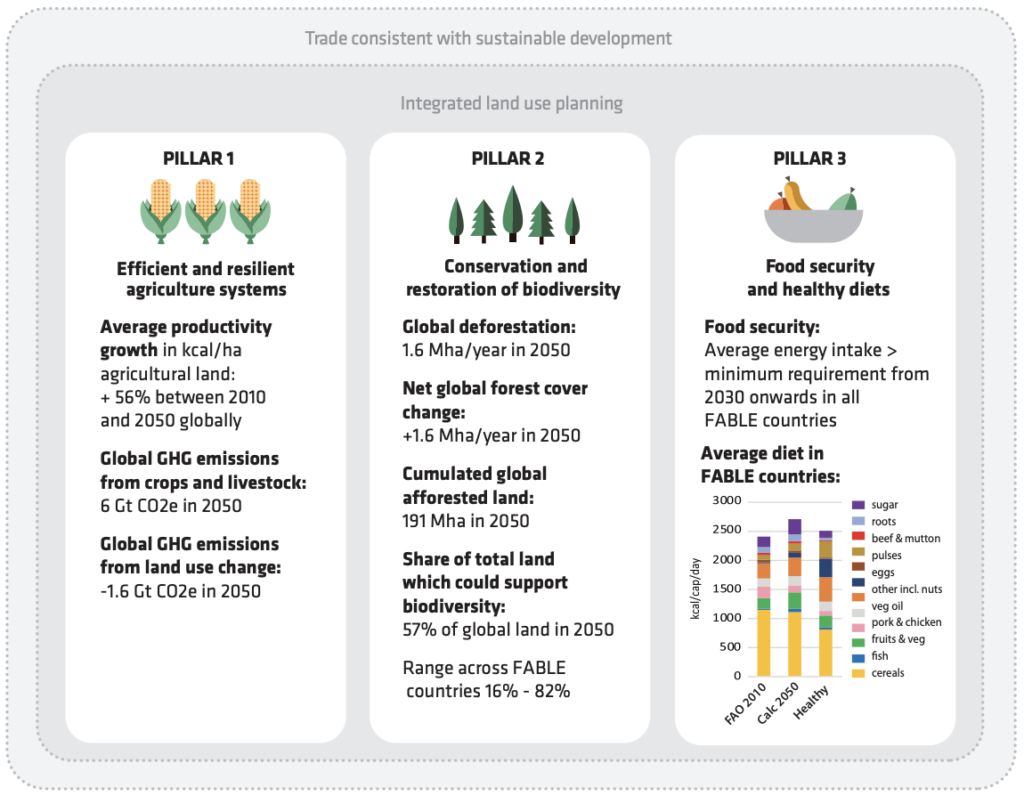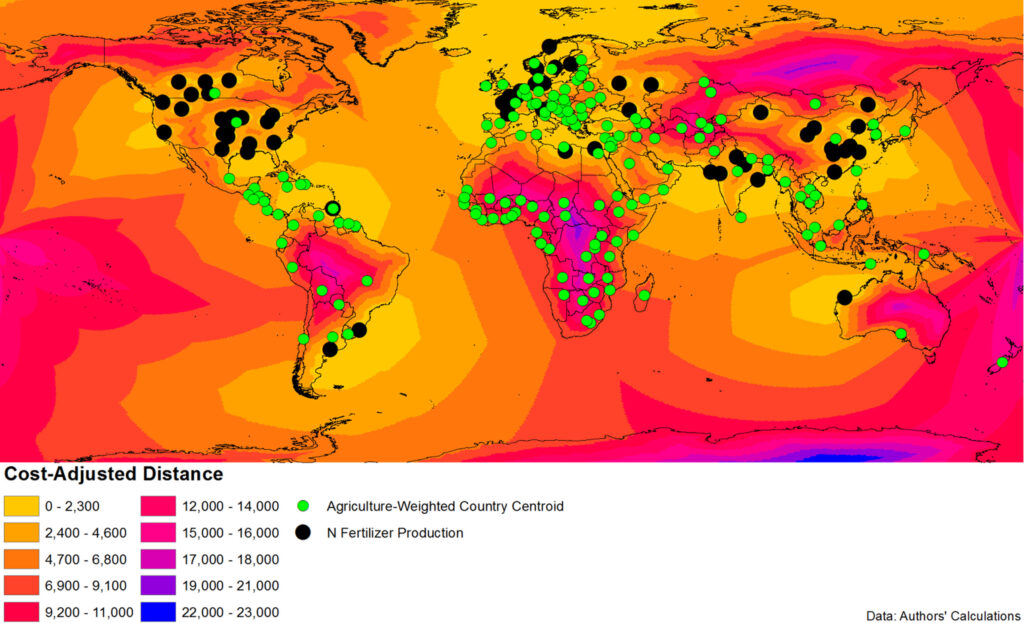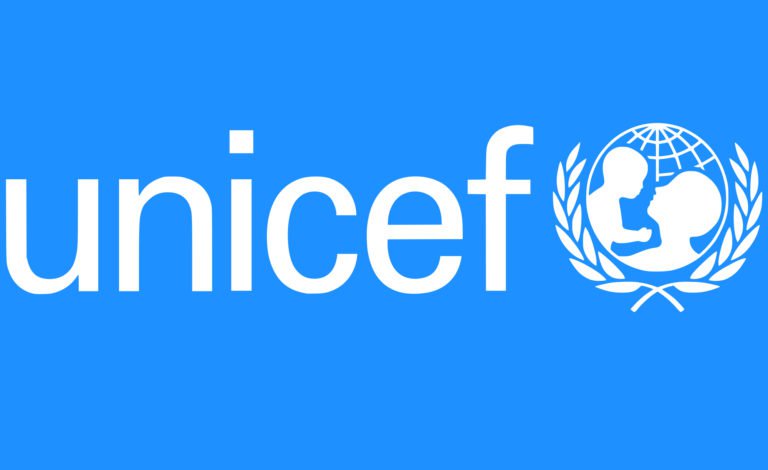Technological transformations open new opportunities and disrupt old patterns. Founded in 2006, Center on Global Transformation (CGT) provides a new framework for vanguard exploration of topics critical to analyzing and shaping the forces of economic change in a deeply interconnected, thoroughly dynamic world. CGT and its Pacific Leadership Fellows program focus on academic inquiry and policy analysis of international issues. CGT’s core mission is to: Foster and disseminate research that addresses global economic and technology transformation Develop and maintain a network…
SDG 2
Hunger is on the rise again globally and undernutrition continues to affect millions of children. Public investment in agriculture globally is declining, smallscale food producers and family farmers require much greater support and increased investment in infrastructure and technology for sustainable agriculture is urgently needed.
Recent research at the School of Global Policy and Strategy
The FABLE Consortium has released its 2020 Report on Pathways to Sustainable Land-Use and Food Systems. Explore the latest trends in food and land-use with the new ‘Scenathon’ dashboard. Visit the FABLE Consortium Explore Scenathon Read Report Overview FABLE is a global consortium with teams of scientists in 20 countries modeling land use to 2050 in an integrated framework. Land use and land use change accounts for 23% of GHG emissions globally, biodiversity loss is accelerating at alarming rates, and…
Teevrat Garg
The paper explores the unexpected consequences of road construction projects in rural India. While constructing roads to connect labor markets in remote areas is often seen as a positive development, this study reveals a significant drawback. The research finds that such road projects inadvertently lead to an increase in harmful crop fires, which have detrimental effects on both air quality and human health. The paper draws attention to the need for a more comprehensive understanding of the multifaceted impacts of rural infrastructure development, highlighting the importance of considering environmental consequences alongside economic benefits when planning such initiatives in developing regions.
2023
Gordon McCord
In a study McCord co-authored last year, which explored how the El Niño Southern Oscillation can be used to predict child undernutrition and food insecurity in the developing world, he and fellow researchers emphasized that climate variability is increasingly recognized as a key determinant of health outcomes.
2022
Gordon McCord
Meeting ambitious climate targets will require deploying the full suite of mitigation options, including those that indirectly reduce greenhouse-gas (GHG) emissions. Healthy diets have sustainability co-benefits by directly reducing livestock emissions as well as indirectly reducing land use emissions. Increased crop productivity could indirectly avoid emissions by reducing cropland area. However, there is disagreement on the sustainability of proposed healthy U.S. diets and a lack of clarity on how long-term sustainability benefits may change in response to shifts in the livestock sector. Here, we explore the GHG emissions impacts of seven scenarios that vary U.S. crop yields and healthier diets in the U.S. and overseas. We also examine how impacts vary across assumptions of future ruminant livestock productivity and
Gordon McCord
Mexico aims to develop highly productive and sustainable food systems that ensure national self-sufficiency. This paper employs an integrated land-use modeling tool—the FABLE Calculator—to estimate the degree of policy ambition required for the country to meet mid-century climate, conservation and production goals in the land-use sector. We generate national-level land-use pathways to mid-century in terms of agricultural production, land use change dynamics, greenhouse gas (GHG) emissions, and availability of land supporting biodiversity under varying assumptions of national policy and productivity changes. We estimate the effects of plausible efforts to achieve sustainability in land-use and food systems to 2050 against a business-as-usual benchmark. In the sustainable pathway, assumptions on agricultural land expansion, reforestation, and protected area expansion reflect existing and
Gordon McCord
The El Niño Southern Oscillation (ENSO) is a principal component of global climate variability known to influence a host of social and economic outcomes, but its systematic effects on human health remain poorly understood. We estimate ENSO’s association with child nutrition at global scale by combining variation in ENSO intensity from 1986-2018 with children’s height and weight from 186 surveys conducted in 51 teleconnected countries, containing 48% of the world’s under-5 population. Warmer El Niño conditions predict worse child undernutrition in most of the developing world, but better outcomes in the small number of areas where precipitation is positively affected by warmer ENSO. ENSO’s contemporaneous effects on child weight loss are detectable years later as decreases in height. This
Gordon McCord
What is the contribution of the ‘Green Revolution’ to improvements in child health during the century? We provide global scale estimates of this relationship by constructing a novel, spatially-precise indicator of modern crop variety (MV) diffusion and leveraging child-level data from over 600,000 children across 21,604 sampling locations in 37 developing countries between 1961–2000. Results indicate that the diffusion of MVs reduced infant mortality by 2.4–5.3 percentage points (from a baseline of 18%), with stronger effects for male infants and among poor households. The sizable contribution of agricultural technology to improved welfare should inform global food and development policy.
Gordon McCord
The Food, Agriculture, Biodiversity, Land-Use, and Energy (FABLE) Consortium, a collaborative initiative operating as part of the Food and Land Use Coalition (FOLU), launched its 2020 report, Pathways to Sustainable Land-Use and Food Systems. This second global report of the FABLE Consortium presents pathways towards sustainable land-use and food systems for 20 countries. Its findings suggest that integrated strategies across food production, biodiversity, climate, and diets can meet the objectives of the Paris Agreement and the SDGs.
2020
Jennifer Burney
The yields of most perennials show a significant negative response to ambient ozone, ranging from −2% for strawberries to −22% for table grapes, implying total losses of roughly US$1 billion per year. Historical improvements in California’s air quality may have had large, unaccounted co-benefits for the state’s perennial crop yields, and further pollution reduction could create additional gains.
2020
Craig McIntosh
This study presents the results of an experiment introducing commercial rainfall index insurance into drought-prone farming cooperatives in Amhara Region, Ethiopia. We provided a market-priced rainfall deficit insurance product through producer cooperatives, and test a number of potential ways to kick-start private demand. Take-up of the insurance at market prices is very low, between 0.5% and 3% across seasons. When we use a randomized experiment to distribute small free insurance contracts to farmers, 39% of subsidized individuals enroll but this fails to stimulate input use, yields, or income, and nor does it enhance demand in subsequent seasons. A training and promotion on the product improves uptake and willingness to pay, but also does not improve farming outcomes.
Gordon McCord
This first report by the FABLE Consortium presents preliminary pathways towards sustainable land-use and food systems prepared by the 18 country teams from developed and developing countries, including the European Union. The aim of these pathways is to determine and demonstrate the technical feasibility of making land-use and food systems sustainable in each country. They can also inform mid-century low-emission development strategies under the Paris Agreement on Climate Change.
Craig McIntosh
This study was designed to ‘benchmark’ a major USAID-funded child malnutrition program against what would have occurred if the cost of the program had simply been disbursed directly to people to spend as they see fit. The results indicate that programs targeted towards driving specific outcomes can do so at a lower cost than cash, but large cash transfers drive substantial benefits across a wide range of impacts, including many of those targeted by the more tailored program.
2018
Gordon McCord
This paper estimates the role of agronomic inputs in cereal yield improvements and the consequences for countries’ processes of structural change. It is estimated that a half-ton increase in staple yields generates a 14 to 19 percent higher GDP per capita. Five years after the increase in staple yields, there is an estimated 4.6 to 5.6 percentage point lower labor share in agriculture.
Gordon McCord
Integrating HIV and nutrition programming leads to a positive impact on health outcomes. A small-scale pilot program that integrated HIV and nutrition service delivery, Malawi’s program had a cost-effectiveness of $11–29 per disability-adjusted life year, while Mozambique saw a cost effectiveness of $16–59 per disability-adjusted life year.





